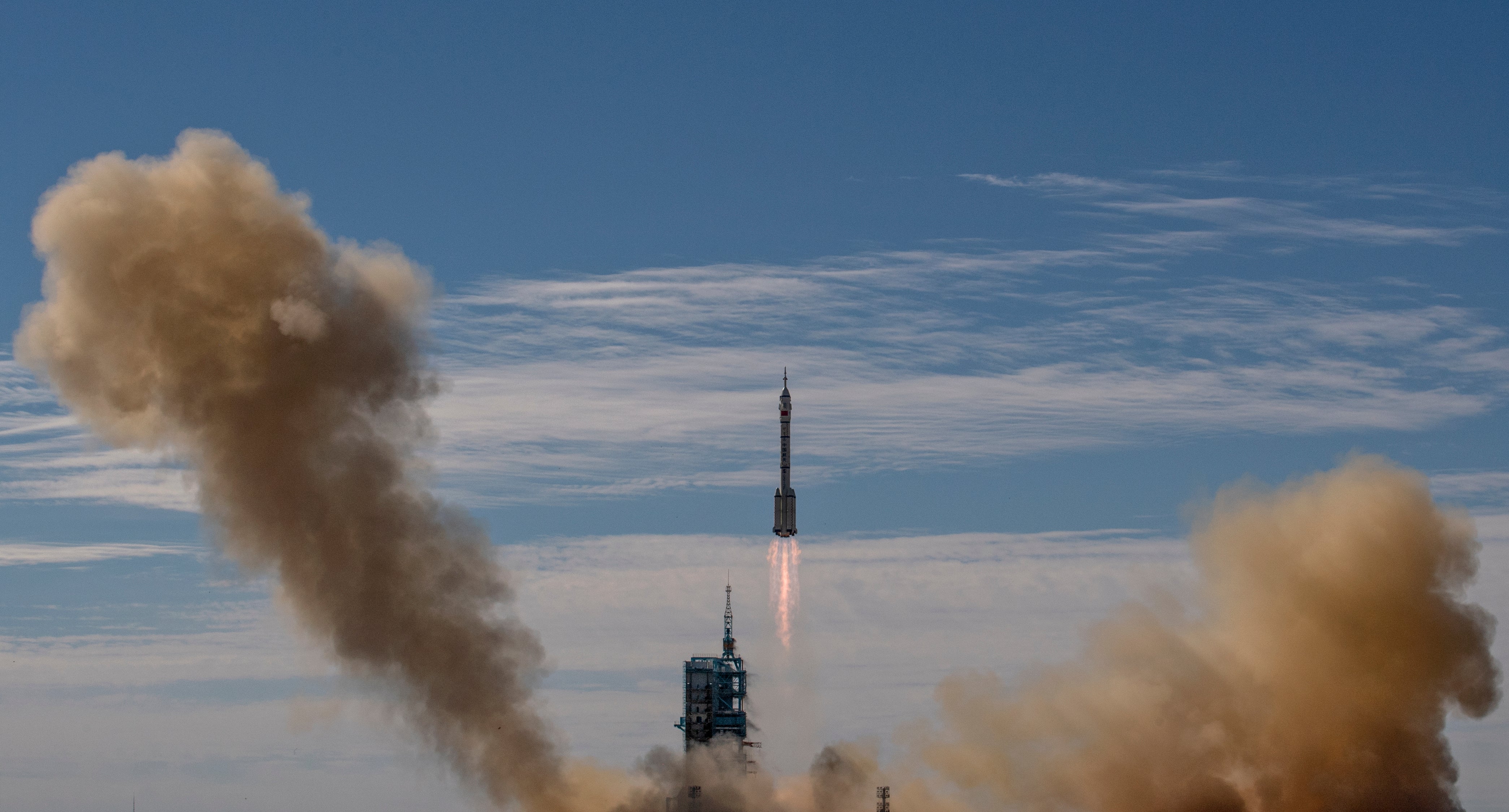China completes historic launch of first astronauts to stay on its new space station
Spacecraft will dock with main section of Chinese space station that was placed in orbit on 29 April

Your support helps us to tell the story
From reproductive rights to climate change to Big Tech, The Independent is on the ground when the story is developing. Whether it's investigating the financials of Elon Musk's pro-Trump PAC or producing our latest documentary, 'The A Word', which shines a light on the American women fighting for reproductive rights, we know how important it is to parse out the facts from the messaging.
At such a critical moment in US history, we need reporters on the ground. Your donation allows us to keep sending journalists to speak to both sides of the story.
The Independent is trusted by Americans across the entire political spectrum. And unlike many other quality news outlets, we choose not to lock Americans out of our reporting and analysis with paywalls. We believe quality journalism should be available to everyone, paid for by those who can afford it.
Your support makes all the difference.China has successfully launched a spacecraft carrying three astronauts to occupy its new space station which is still under construction, marking the country’s first crewed spaceflight in nearly five years.
The three men – Nie Haisheng, Liu Boming, and Tang Hongbo – bound for the new Chinese space station’s core module, were launched on a Long-March 2F rocket at 9.22am Beijing time (1.22am GMT) from the Jiuquan Satellite Launch Centre in China’s north-western Gansu province, on the edge of the Gobi Desert.
The spacecraft Shenzhou-12 will dock with the main section of the space station Tianhe, or Heavenly Harmony, which was placed in orbit on 29 April.
The current launch is part of the third of 11 missions planned through the end of next year to build and maintain Tianhe, and send up crew members and supplies.
Over the next three months, the crew would work and stay on the space station’s living quarter and help build the 66-ton three-module orbital outpost.
As the men’s physical and psychological health are monitored during their stay, they would also test the module’s life-support system and other technologies.
The station’s other two modules are slated to be launched next year.
Since the 1990s, China has been planning to build its own permanent space station and it has not been part of the International Space Station (ISS) with the US, often objecting to the secrecy and close military ties of its space missions.
The new space station under construction will be the 11th crewed space station ever built, and China’s first permanent one to host astronauts long-term, expected to stay in orbit for at least ten years.
Its construction is built on the experience the country gained from two previous experimental space stations.
Previously, China had launched its first crewed space station in 2011 – Tiangong-1– but in September 2016 officials announced that they had lost control of it after its orbit gradually decayed over the years.
Its successor, Tiangong-2, fared better, housing two astronauts for over 30 days and enabling them to conduct research on space radiation and weightlessness, but it too was decommissioned in 2019 as planned.
Join our commenting forum
Join thought-provoking conversations, follow other Independent readers and see their replies
Comments